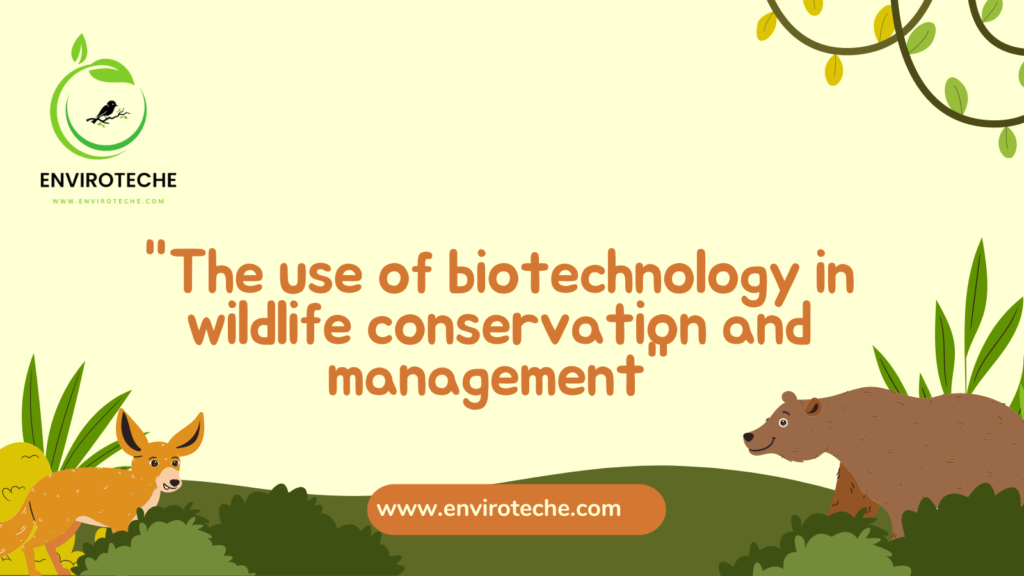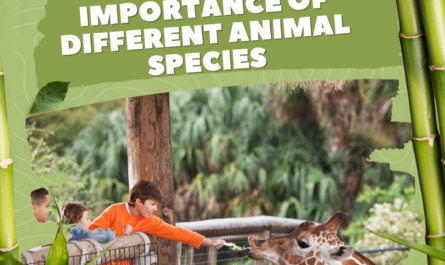
Nimra Ather1, Muhammad Qasim2
Department of Zoology, University of Agriculture Faisalabad1
Department of Environmental Sciences, Government College University Faisalabad2
Introduction:
The use of scientific and engineering principles in the processing of materials by biological agents to produce goods and services is known as biotechnology. Biotechnology has grown in significance as a technique for protecting endangered species, boosting genetic variety, and regulating populations in wildlife conservation and management. We’ll talk about how biotechnology is used to manage and conserve animals in this blog.
Biotechnology in Wildlife Conservation and Management:
- Genetic modification and cloning: Animal genes can now be altered using biotechnology to achieve desirable features like disease resistance or higher survival rates. Cloning has also been used to resurrect extinct species and breed endangered species.
- Assisted reproductive technologies: In vitro fertilization (IVF) and artificial insemination are two examples of assisted reproductive technologies (ARTs) that have been made possible by biotechnology. The populations of endangered species have grown thanks to the usage of these technologies.
- DNA fingerprinting and mapping: Identification and population tracking of specific animals and groups of animals are now possible because of DNA fingerprinting and mapping. These methods support population monitoring, which is essential for the efficient management and conservation of genetic diversity, relatedness, and population size.
- Disease diagnosis and management: The creation of sophisticated diagnostic equipment and treatments for different animal ailments has been made possible by biotechnology. These methods aid in the early identification and efficient control of diseases, minimizing their negative effects on animal populations.
- Tracking and monitoring wildlife populations: Advanced tracking and monitoring technologies like radio collars, GPS tags, and drones have been made possible by biotechnology. In order to manage wildlife populations, it is essential to monitor animal numbers, follow their travels, and analyze their behavior.
Habitat restoration and management: Techniques for managing and restoring habitat have been made possible by biotechnology. These methods include the creation of plant and animal species that can survive in deteriorated ecosystems as well as the use of bioremediation to purify polluted surroundings.
Invasive species control: Effective methods for managing invasive species have been made possible by biotechnology. The use of gene editing and the creation of genetically modified organisms that can outcompete invasive species or manage their numbers are two examples of these strategies.
Bioremediation: The use of bioremediation to purge contaminated areas has been made possible by biotechnology. By using living creatures like bacteria to break down toxins, bioremediation makes the environment safe for animals.
Biotechnology in Disease Control: Diseases have the potential to drastically reduce wildlife populations. By creating vaccinations or genetically modifying species to be resistant to specific diseases, biotechnology can help contain disease outbreaks. For instance, scientists are creating a vaccination for Tasmanian devils to guard against a contagious facial tumor that has wiped out the species’ population.
Ethical Concerns Surrounding Biotechnology in Wildlife Conservation: While biotechnology presents opportunities for conserving wildlife, it also creates moral questions. For instance, some people contend that biotechnologies like genetic engineering interfere with nature and may have unforeseen repercussions. Some people also worry that genetically modified organisms made via biotechnology might endanger the environment or other species.
Cloning and Genetic Engineering: Some of the biotechnological practices that have generated the most debate and controversy are cloning and genetic engineering. They entail changing an organism’s DNA in order to create progeny that is either genetically similar or altered. Cloning and genetic engineering can be employed in wildlife conservation to produce populations of endangered species that are free from genetic disorders and diseases.
In Vitro Fertilization: A biotechnological method called in vitro fertilization (IVF) is used to boost the likelihood of fertile conception. IVF can be used to reproduce threatened species of animals in confinement, improving their chances of survival.
Cryopreservation: The process of freezing cells, tissues, or organs at very low temperatures is known as cryopreservation. Cryopreservation is a technique used in wildlife conservation to protect genetic material from threatened species, such as sperm, eggs, and embryos, in order to assure their survival and support genetic variety.
Microsatellite Analysis: A biotechnological method for examining population genetic organization is microsatellite analysis. Microsatellite analysis can be used in wildlife conservation to spot populations that are in danger of going extinct and to follow the migration of individuals within a population.
Translocation: Moving animals from one place to another is known as translocation. Translocation is employed in animal conservation to reintroduce new genetic material into current populations or to establish new populations of threatened species in regions where they have gone extinct.
Conclusion
The management and conservation of wildlife have been transformed by biotechnology. It has given researchers effective techniques for managing populations, preserving genetic variety, and saving endangered species. A few biotechnological methods utilized in wildlife conservation include cloning, genetic engineering, in vitro fertilization, cryopreservation, microsatellite analysis, and translocation. Even though some of these methods are debatable, they provide the world’s endangered animals hope for a better future.
Check Other Schlorships:

